Running a high-growth startup is rewarding and challenging. And hiring in startups is one of the biggest challenges that founders face. Bad hires can ruin your momentum and disrupt your team. But without talent injections, growth isn’t going to happen.
Don’t worry because help is at hand. This article will explain how to hire employees for startup businesses. We will look at some of the main challenges and provide some creative ways to recruit the talent you need.
TL;DR – Key Takeaways
- Hiring is a common challenge for startups. If you start hiring too soon, you can disrupt the harmony of your startup team. But if you delay, you can miss out on growth opportunities and skills. Choosing the right time to hire is critically important.
- Hiring challenges for startups include limited resources, avoiding bad hires, lacking brand credibility, and scaling up operations without causing disruption.
- Every challenge has a solution. For example, startups with limited resources can offer remote work options, provide appealing benefits, and create workplace cultures built around skills and personal development.
- Skills are a critical part of successful startup recruitment. Skills testing makes hiring more efficient and accurate. It saves time and identifies top candidates. Use Toggl Hire’s huge range of skills tests to create a recruitment pipeline that serves your needs.
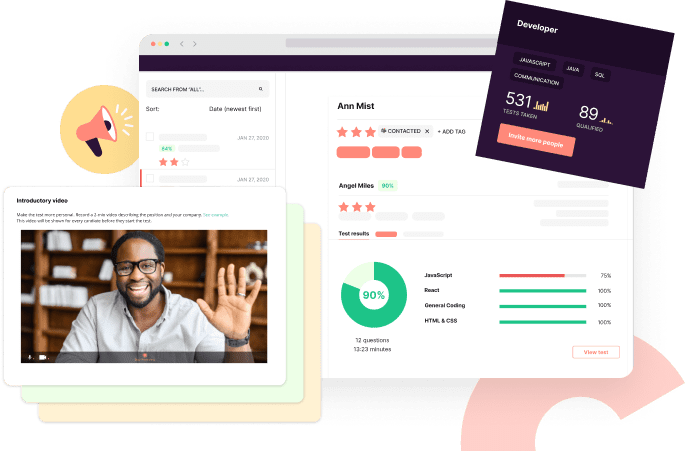
Why hiring is a critical challenge for startups
Turning a killer idea into a thriving business requires more than inspiration. Co-founders can get a long way down the startup road on their own. But sooner or later, young companies need to start hiring. And when they do, it can make or break their prospects.
Startups depend on hiring managers with motivation, inspiration, and determination. New hires need to buy into the business mission. But they also need the right capabilities to take the company forward. In other words, startups need exceptional people. The problem is finding exceptional people is difficult – especially for companies with virtually no profile.
Even worse, getting early hires wrong can be disastrous. Poorly chosen hires add costs without bringing value. They ruin what were smooth communication lines and inject negativity into what should be a positive, growth-focused environment.
All of this makes it imperative to choose your first hires wisely or – if the talent isn’t available – to delay your expansion until conditions are right.
But first, do you really need to hire a new employee?
Startups often kick-start the hiring process early on. Hiring new managers feels like a crutch to navigate chaotic workloads and a lack of processes. Founders can tell themselves they have taken action and improved the organization, but this isn’t always true.
It might sound counter-intuitive, but sometimes, not hiring is a better option for startups. It’s so easy to upset the blend of passion, genius, and camaraderie that drives successful businesses. A few mis-hires is all it takes.
So, how can you tell when it is or isn’t a good idea to explore your hiring options?
Every startup is different, but we can offer some broad ideas.
Generally, looking outside the business isn’t necessary when:
- Workloads have increased temporarily but will fall back following a burst of orders. Don’t mistake a few golden business days for sustainable growth.
- You already have the necessary skills inside the business. Be sure to test the abilities of your team and leverage your talents before making your first hire – or new hire in general.
- Tech can fill the gap instead of a full-time employee. For example, automation tools can handle many admin tasks and even manage customer relationships.
- You can’t afford to increase your wage bill. Don’t assume that new hires will lead to explosive growth. Work within your means.
- The role isn’t needed. Founders read a lot about “must-haves” as they grow their businesses. But beware of hiring fads. For example, do you need a TikTok creator? Maybe eventually, but at the outset, you can probably do without.
What’s more, moving too fast can have damaging consequences for the health of your business.
Plenty of promising new companies have fallen victim to problems like:
- Spiraling recruitment costs – Finding new recruits costs a significant amount of money. Training hires to meet your standards takes time and money. And recruiting replacements when hiring employees goes wrong costs even more money.
- Operational inefficiency – Small startups are lean and efficient because they rely on direct personal relationships. However, adding new employees can compromise communication chains. Founders often find that putting their visions into practice suddenly becomes far more complex.
- Damage to company culture – An early-stage startup is a tight unit that relies on everyone pulling together. Adding employees can cause personality clashes with existing employees. And that precious dream team feeling can quickly disappear.
- Scalability concerns – Startups plan for growth. But if you add open positions before the foundations are in place, you may struggle to scale effectively.
- Dilution of equity – Giving new employees a share in the business is great for motivation and attracting interest. But it takes control away from the founders. And the startup may lose strategic direction if you hire too many new people too soon.
Before you start hiring, assess your options. If you don’t need to recruit yet, don’t. But if you do, we can help you create a hiring plan that finds the right candidates.
6 Common problems that make recruitment in startups tough
As you know, the competition for top talent never ends. And hiring employees is no picnic. This list of recruitment challenges applies to most new companies:
- Money worries – Tight budgets leave little room for startup recruitment campaigns. 77% of US startups rely on personal savings to get off the ground. You need to make every cent count.
- Employer brand issues – 84% of job seekers see company reputation as a major factor in their decisions. When nobody knows who you are, candidates won’t flock to your application forms.
- No big achievements – They may be on the road to domination, but startups often have nothing to show for themselves yet. You need a strategic hiring plan and a creative recruitment campaign to stand out.
- Limited hiring experience – Hiring employees is complex, and small companies lack the experience to sift gold from the sand. 75% of business owners report making the wrong hiring decision.
- Uncompetitive benefits – Employees want sick pay, time off, and flexible hours. And 96% of workers view health insurance as important when choosing jobs. But startups on tight margins aren’t always able to deliver.
- Balancing growth and recruitment – Hire too quickly, and you create overheads that absorb revenues. But without a hiring plan, how can you grow? It’s a tricky situation and a major reason why 90% of startups fail.
The good news is that these are just challenges, and challenges have solutions.
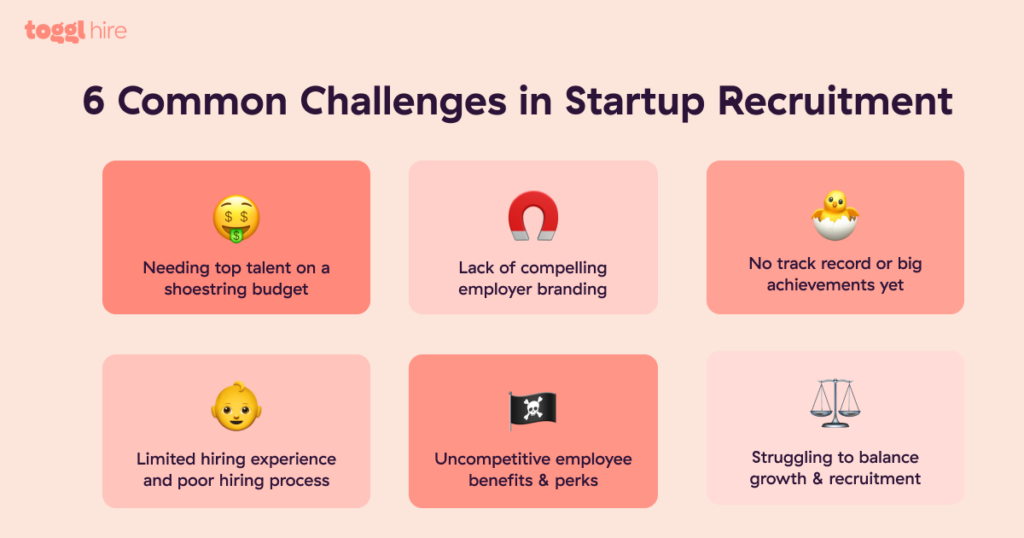
Challenge #1 – how to hire with limited financial resources?
Early-stage startups can’t compete with the salaries offered by established companies. But they need top-tier candidates to turn an idea into a viable business. So how can their hiring plan attract A-level talent with a C-level budget?
Strategy: hiring for potential and efficient recruitment process
#1 – Use internships to identify promising talent
Internships are a great way to see candidates in action. And while you should pay interns a living wage, the work they carry out means that the actual costs aren’t all that high.
Top candidates are attracted to internships because they provide practical experience and offer a glimpse of their future career path. If you design internships well they will be a reliable pipeline, delivering motivated individuals to specific business roles.
Recruiting interns in a hiring plan also reduces the risk of costly mis-hires. Before you make a job offer, internships act as competency tests. They double-check that a new hire is as good as they seem. And they offer a time period for new hires to get used to the company vibe, making them more likely to stay over the long term.
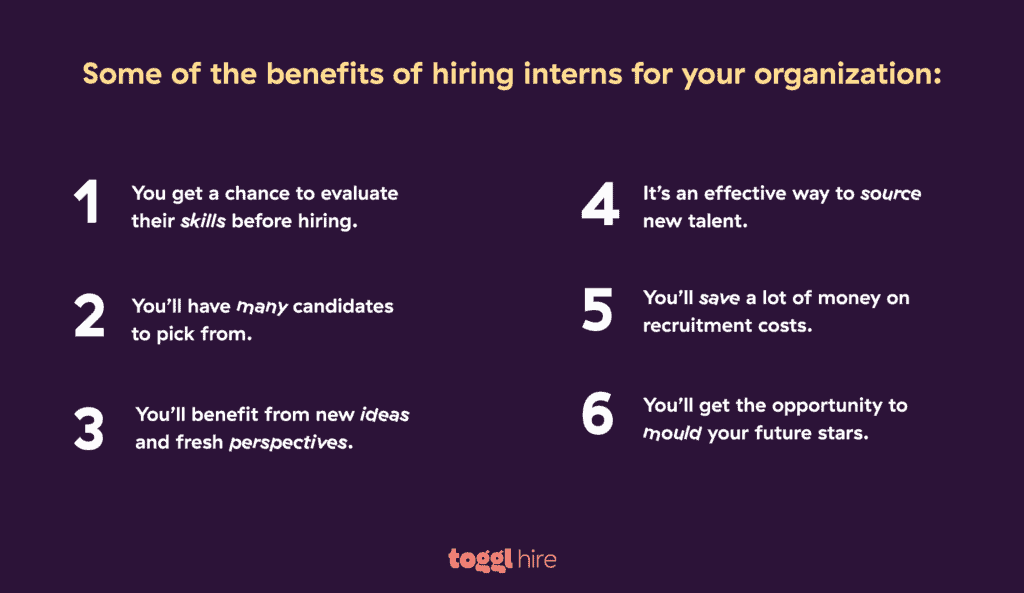
#2 – Think about offering equity as an enticement
Startups can’t offer investment bank-style wages, but they do have something else up their sleeves: their future growth. Startup equity shares can blossom into small fortunes when companies succeed. And they appeal to imaginative job seekers who want more than a steady wage.
Be careful about diluting your control. Equity shares of 0.5-2% are common for first hires. And they work best in combination with other benefits (and an inspiring business vision).
#3 – Automate parts of your recruitment strategy
Automating startup recruitment saves money by taking care of routine tasks. Most startups can use automation tools to screen initial applications. But you can achieve even more with automated skill testing.
Early-stage skill testing can replace CV submission (or at least supplement it), making it easier and more enjoyable for candidates to apply. Automation, in this case, automated grading, can help you filter test results and prioritize talent with the right skills for the role, fast-tracking them to the next stage. Testing saves time for assessors, consumes fewer resources, and accurately identifies who has the core competencies to thrive in your business.
Further down the line, automated testing can replace rounds of interviews. Well-designed tests provide proof of competence. You can focus on the best-fit candidates and protect yourself against costly mis-hires.
Resumes and interviews alone don’t provide enough information. Instead, take a look at our skills assessment library and use the results of pre-employment skills testing to find talent that will really make a difference.
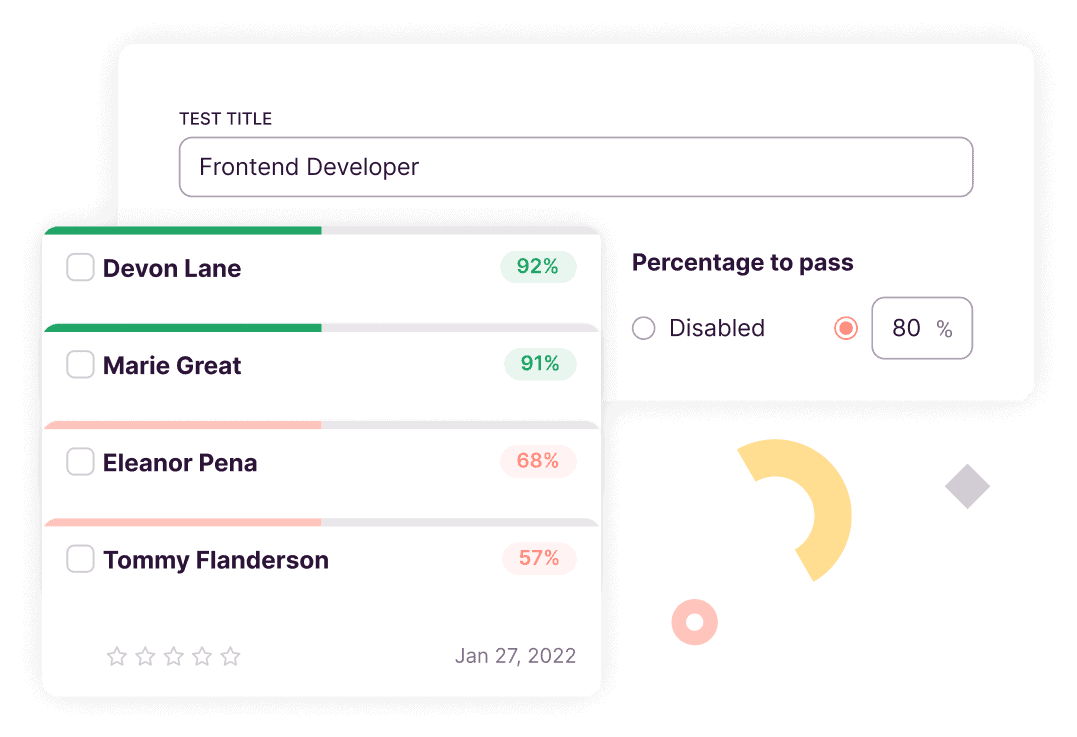
Track your progress with these key metrics
Average cost per hire is the best startup recruitment metric to use here. Total your internal costs such as time spent writing job descriptions or reading resumes. Add in external costs like sourcing automation tools. And divide the number you get with the number of new employees.
Challenge #2 – how can you attract top talent to your startup?
Startups rely on talented employees to develop their systems, sell their products, and manage their operations. But the best candidates are attracted to safer career paths and higher wages at established companies. How can your hiring plan appeal to the best talent when the odds are stacked against you?
Strategy: invest in recruitment marketing and organic reach
#1 – Start by building your personal brand
Top candidates want to work for founders who reflect their dynamism and ideals. As a founder, you have a compelling story to tell, both about where you come from and where your brand is going. But are you telling your story to job-seekers? If not, it’s time to revisit your personal branding strategy.
Social media is a big part of modern brand building. Use platforms like X (formerly Twitter) to get your message out (but don’t get bogged down in irrelevant debates). And forge a public persona on LinkedIn – the number one platform for attracting attention from potential recruits.
On every platform, deliver content that expresses your brand mission and identifies you as an expert in your field. Keep things simple, authoritative, but entertaining, and connect personal content to your startup brand as often as possible.
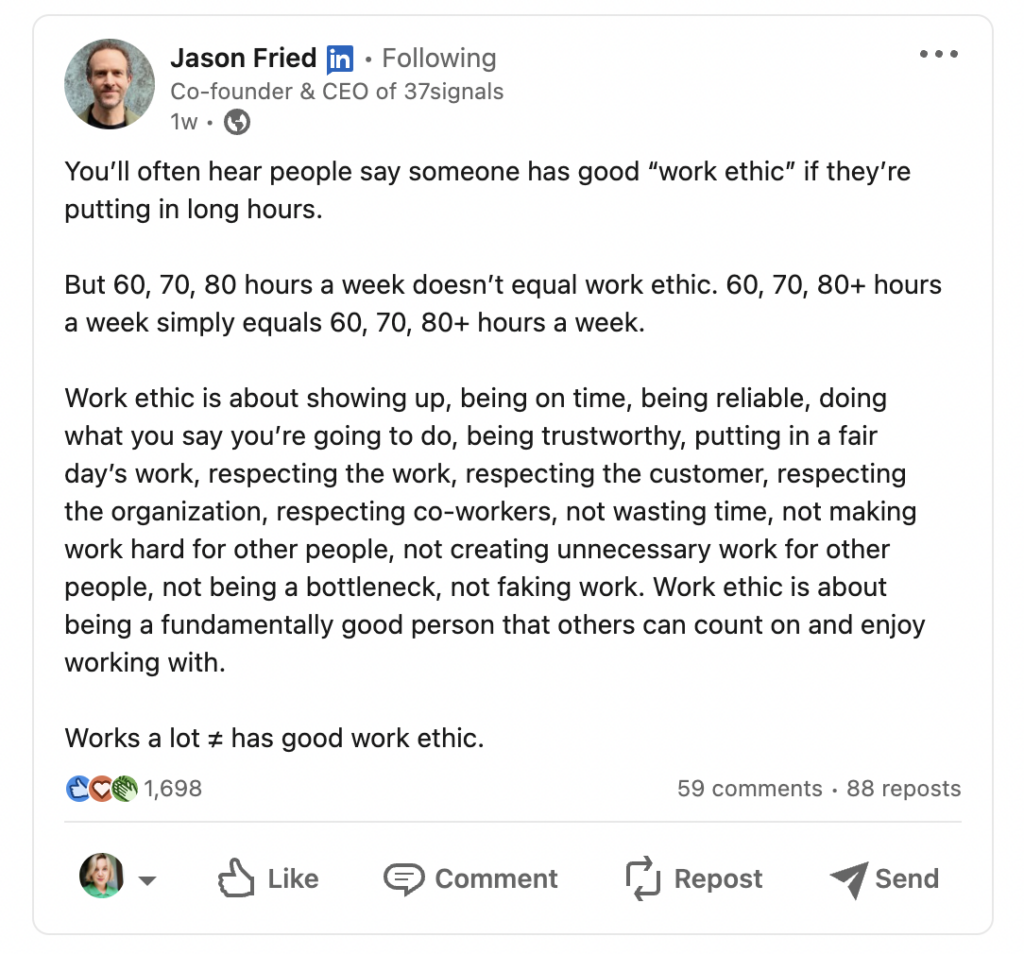
It’s also a good idea to enlist managers as brand representatives. Managers can use their unique skills to build a personal brand while contributing to your startup’s public image. That way, you will extend your organic reach and attract potential employees who want to build their profile.
#2 – Write unmissable job descriptions
Job descriptions can turn off or lock-in candidates from the start. The job description is rarely a deal-breaker, but they are the first thing many applicants see. So they need to be good.
Focus each job description on essential skill levels and how your company will allow candidates to develop their abilities. When they read the job description, applicants should know straight away they are entering an environment that values and challenges them.
Be specific about must-haves, but not too specific. You want to reach qualified candidates with related abilities who are intrigued by the role. Exploring granular aspects of their abilities comes later.
Alternatively, consider this: do you actually need job descriptions in your startup hiring strategy?
Instead of dry job description formats, try combining a vision statement with gamified elements like skill testing. Candidates can get a sense of the brand’s mission and vibe. Testing introduces some of the required capabilities while starting the recruiting process in an engaging way. Here’s how we do it at Toggl:
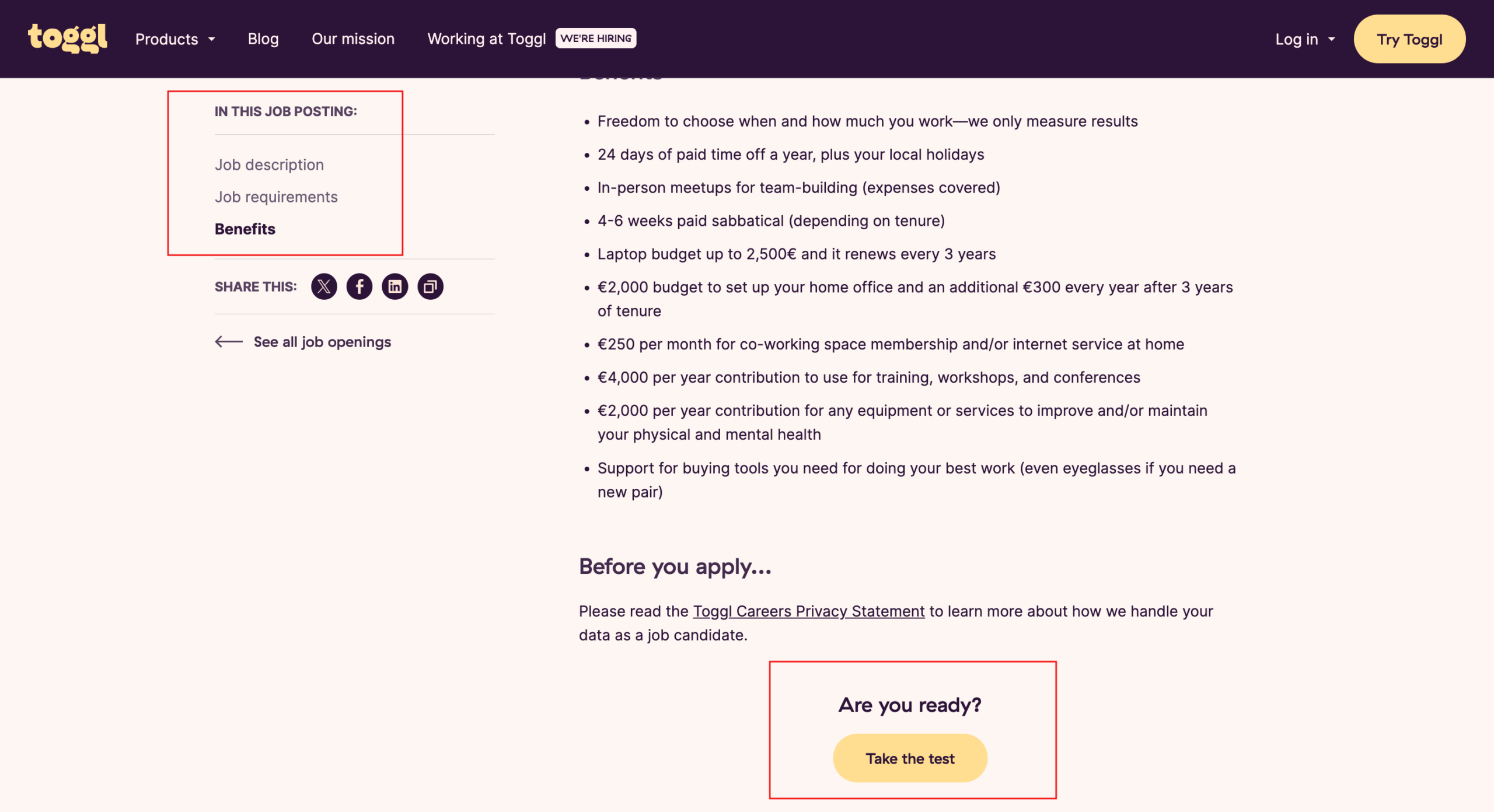
#3 – Use employee ambassadorship as social proof
Using co-founders or existing employees as ambassadors is a great way to sell an employer brand to uncertain applicants.
Encourage team members to mention your brand on social media or LinkedIn pages. If you think it’s necessary, give staff a quick list of selling points that capture your unique mission. Make sharing your message as easy as possible.
Don’t be too strict about this. Nobody likes being forced to repeat employer brand messages to their friends. Just mention brand advocacy at team meetings and – more importantly – foster the kind of company culture that employees want to share.
#4 – Design a rewarding employee referral program
Never neglect word-of-mouth and staff connections when finding the top candidates. Employee referrals account for 20-40% of hires at young companies. So, knitting referrals into the startup hiring process makes perfect sense.
Referral programs offer incentives for your team to contact their friends and ex-colleagues. Referrals reach passive candidates that aren’t accessible to other recruiting tools. And they tend to result in faster, higher-quality hires.
Set incentives high enough to encourage participation. Regularly check in with employees to talk about their connections. And provide employees with relevant information. For instance, creating an ideal candidate persona will help them find suitable candidates.
Challenge #3 – how to boost your credibility?
Startups without notable milestones or successes under their belt find it challenging to showcase their potential and credibility to prospective employees. This lack of proven track record can make candidates hesitant about the stability and future prospects of the company.
Strategy: build a compelling employee value proposition
#1 – Celebrate milestones to create momentum
Every early-stage and growing startup has something to celebrate. Showcasing key moments or achievements is a fantastic way to build a compelling identity.
When you introduce new products, turn launches into special events. Celebrate new partnerships with third parties or major clients. Let the world know when you achieve cybersecurity certifications or gain admission to registers of trusted partners.
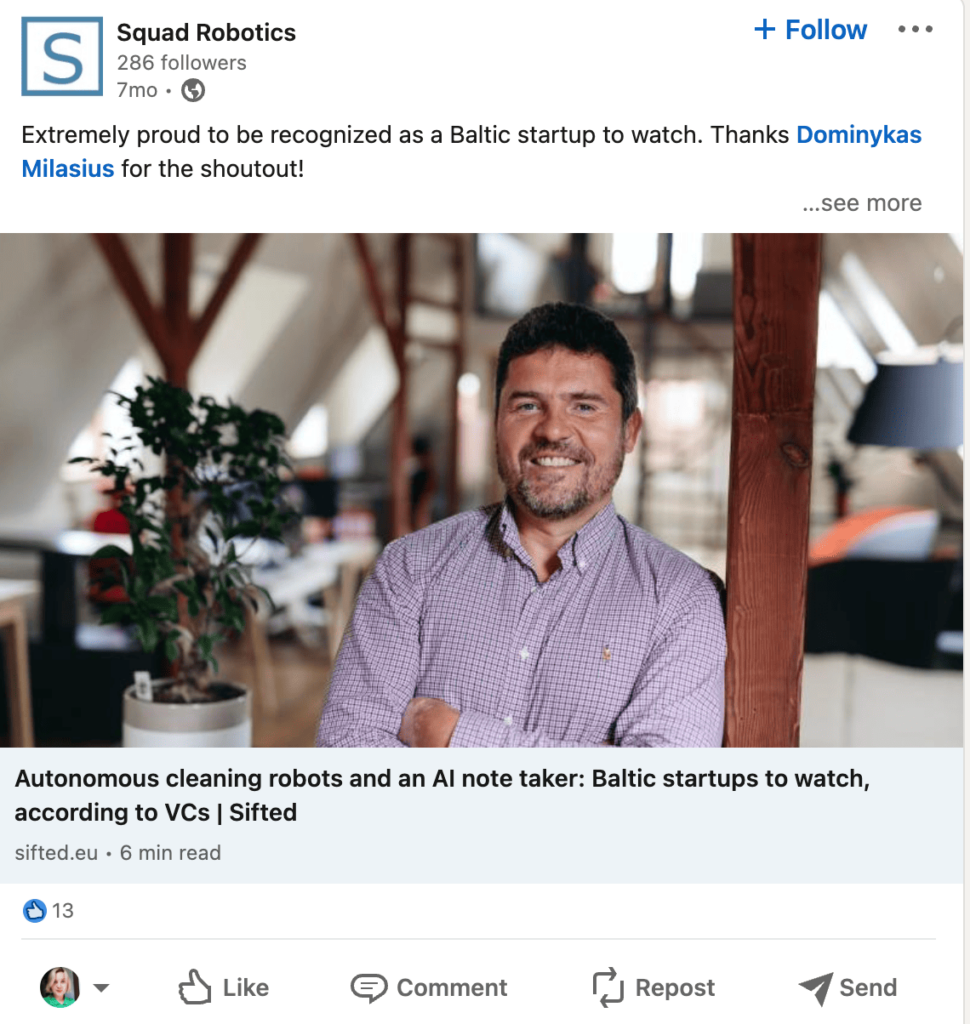
You can even look for ways to engineer “small wins”. For example, there may be startup competitions in your field. Winning prizes and attending ceremonies always generates positive content.
Make light-hearted blogs and social media content explaining your milestones. And always ground events in your brand story. Job seekers will read that story and want to join a company with a forward-looking, positive culture.
#2 – Sell a compelling vision
In the early days, when nobody knows who you are, a startup’s vision is their brand. This especially applies when crafting an employee value proposition (EVP). But what kind of vision should you communicate to potential employees?
EVPs are all about what you give back to employees. They often include things that startups cannot provide, like generous benefits, flexible hours, and high pay. But the company vision is about more than perks.
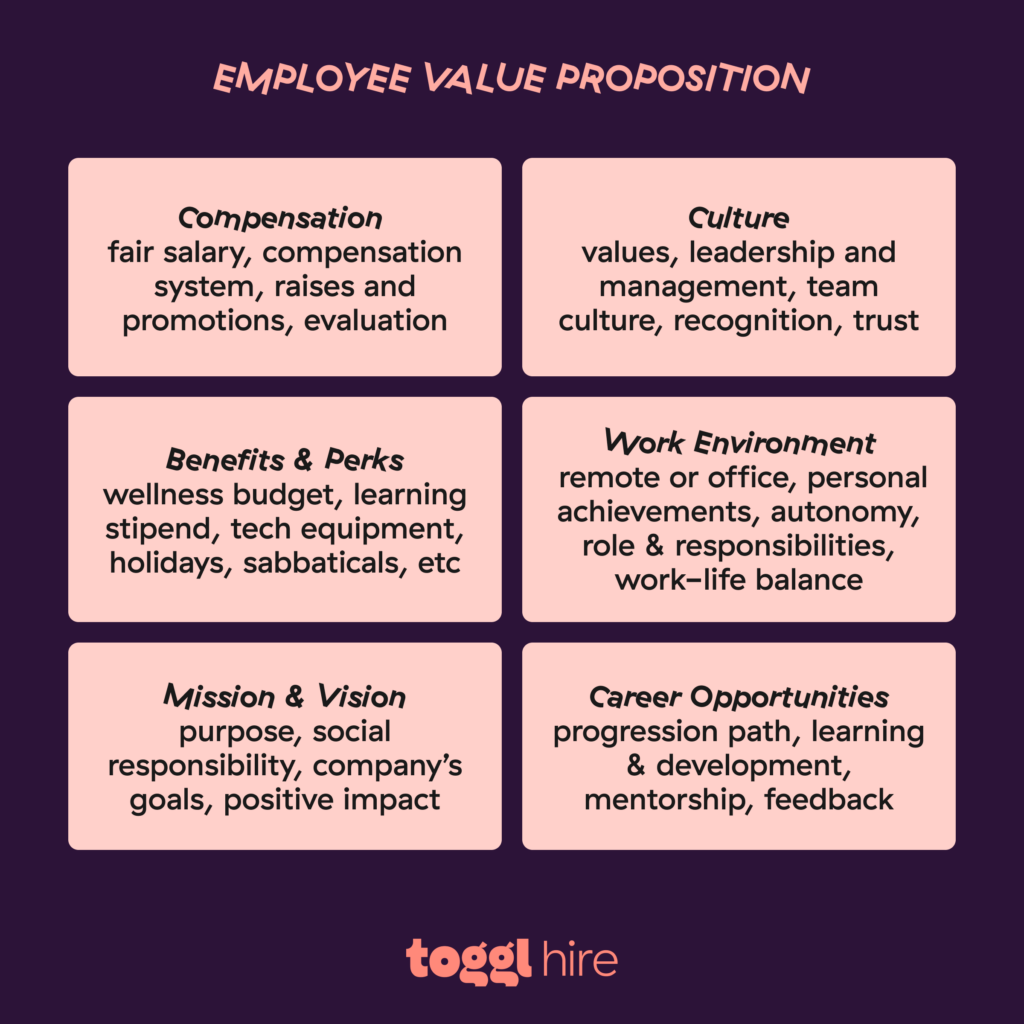
Creating a company culture where employees can grow their skill levels and shape a new company is just as compelling. And it may appeal even more to creative people who aren’t part of the herd.
We like to think our EVP is a good example. Toggl Hire offers paid sabbaticals to chill out or build skills and an annual professional development budget that covers training. While we’re globally distributed, we work hard to stay in touch as a team by investing in quarterly meetups. And we’re always looking to reward dynamic employees with promotions and creative perks.
#3 – Announce new team members to showcase stability & growth
Even the most freewheeling candidates want to join companies that are stable and ready to grow. But without tangible evidence of either, startup recruitment teams need to get creative.
Employee announcements are one way to get the message across. These announcements coincide with the onboarding process for each new employee. They should let the world know about the arrival of an A-grade hire at the company while showcasing that individual’s talents and passions.
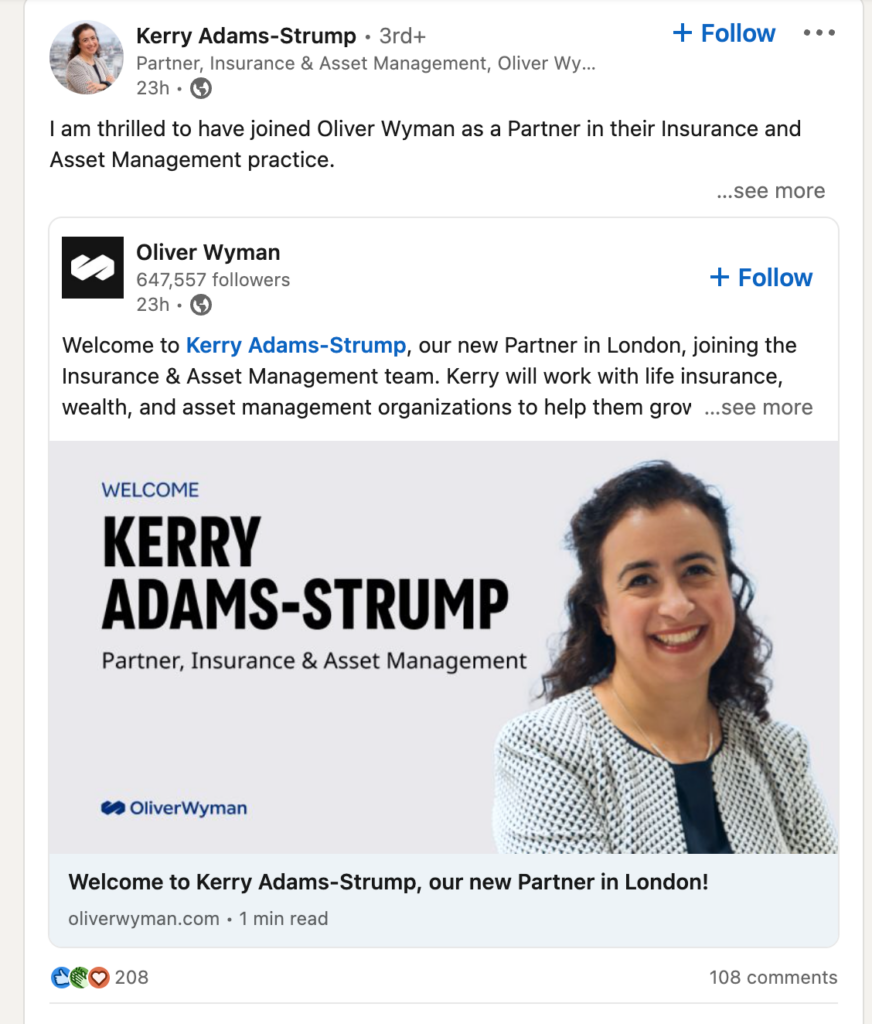
Couple video interviews with content about the new employee’s hobbies or abilities. With a little knowledge, you can craft announcements that weave hires into your company culture. Moreover, videos show that you see your staff as people, not just resources. That really matters in a small team where making employees feel motivated is all-important.
Challenge #4 – how to avoid bad hires?
First-time founders or startups making their initial hires might not have a structured hiring process in place. Lack of experience can lead to longer hiring times, mismatched hires, or potential legal complications.
Strategy: implement skill-based hiring
#1 – Create the ideal candidate profile
If you know exactly who you are looking for, you can target your recruitment strategy more effectively. Creating ideal candidate personas is absolutely vital when finding the right fit for each role.
Use job task analysis (JTA) to find a good fit between candidates and roles. JTA breaks down the responsibilities and tasks attached to roles. Recruiters know specific criteria that are must-haves for great candidates. And they can use their analysis to write a clear profile for job seekers and recruiters.
Focus on essential technical skills for the role in question. But go further as well.
Add core soft skills that suit your startup. For instance, you may look for great communicators with environmental awareness. And look for meta skills, too. Equip your workforce with problem-solving and learning skills needed to stay ahead of the curve.
You can assess meta-skills and soft skills as part of competency assessments. So include them in your profile and build them into the startup recruitment pipeline.
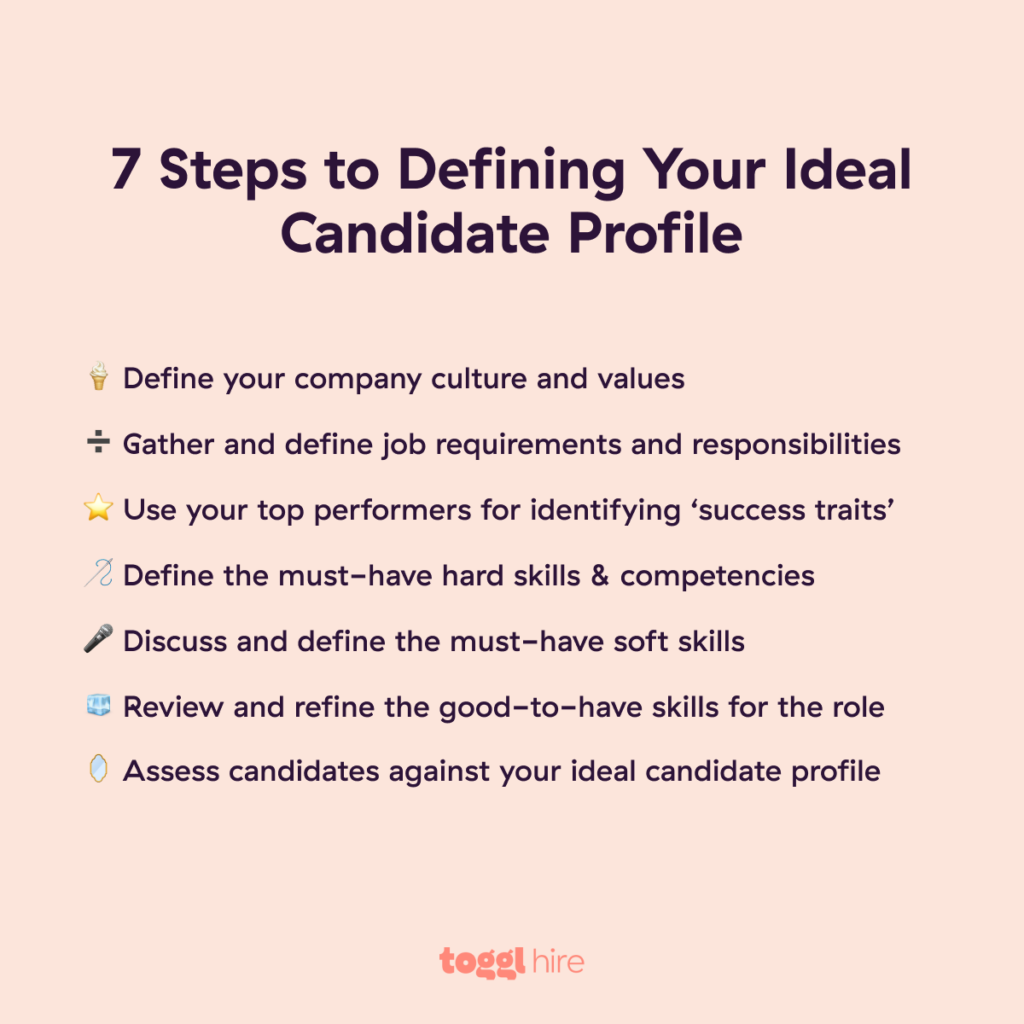
#2 – Adopt a skill-based hiring process to find top talent
Most startup recruitment efforts rely on CVs and the interview process. However, we find that skill testing is much better than spending hours cross-referencing resumes with job descriptions.
Skill testing focuses on role-based competencies and objectively predicts future job performance. For example, you can create coding tests and homework tasks to identify app developers with concrete abilities. And you can combine technical tests with cognitive and emotional assessments. The results will give you much more confidence about each hire.
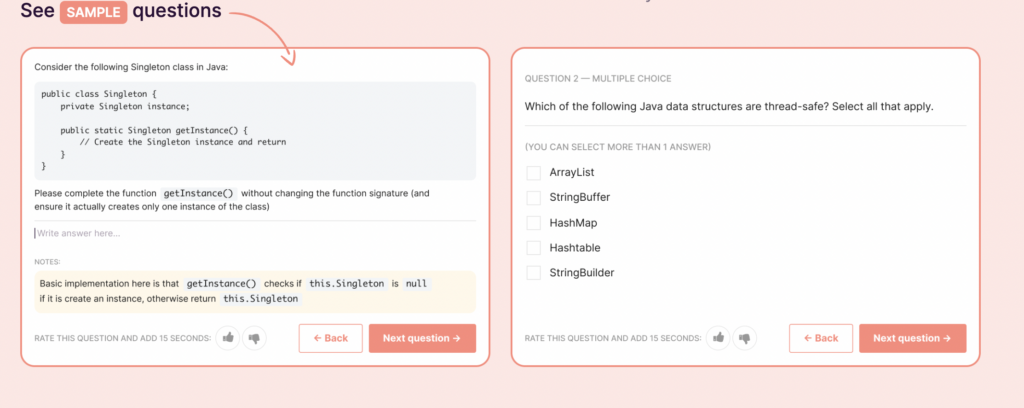
Testing also scales to meet the needs of mature start-ups as they scale. With the right tools, you can compare many profiles and administer extra tests to find promising candidates.
What’s more, testing for skill levels helps HR teams hire people in technically complex fields. If you aren’t a technical wizard, tests allow you to hire someone who is. It’s a big help at every stage of the startup recruitment journey.
How we hire employees at Toggl Hire
We should know. As a budding startup, we need to find candidates with elite-tier skill levels. And while we have the advantage of a strong employer brand, remote-first culture and a compelling EVP, we discovered that great candidates often prioritize something else – a fast, skills-driven recruitment process. Here’s why:
- Replacing resumes with skills assessments helps us draw in qualified passive candidates. Great candidates just can’t help themselves – they’re curious to see how good they are vs their peers!
- We can tap into a much wider and more diverse talent pool, as past experience requirements aren’t holding qualified candidates back. A startup hiring process should focus on surfacing the best talent for the job, not the best CV holders.
- Most qualified candidates appreciate the idea of being assessed against job-specific requirements rather than being dragged through a lengthy interview process. They get a realistic job preview, while we get proof of competence. Better still, spending quality time with best candidates reduces the risk of a bad hire and helps us make better-informed hiring decisions faster.

#3 – Start building your talent pool
The right person is somewhere out there, swimming around the global talent pool. But does your company stand a chance of catching great candidates? Smart startups cast their nets as widely as possible while focusing on the most productive recruitment avenues.
Engage talented contacts on social media.Many top candidates find job ads casually as they trawl their feeds. Attend virtual and in-person graduate recruitment events. Post jobs on recruitment platforms like LinkedIn, Indeed, GitHub, or industry-specific job boards. Whatever it takes to maximize your exposure to talented people.

When you engage job seekers, draw them into your talent pipeline. Gamify your content with tests and competitions. Keep track of the best candidates (even if they aren’t ready to join right now). Maintain a pool of skilled candidates as they could be the right fit for future positions.
#4 – Lean in on your network during the hiring process
Founders tend to be well-connected – both within the startup community and the general business world. When you add in co-founders and employees, you may already have access to potential hires.
Leverage social connections and encourage team members to mine their LinkedIn profiles. Surveys have found that networking fills as many as 85% of startup positions. So, gather your team together as part of your recruitment strategy. Set aside time to check their contacts. You never know what you might find.
#5 – Hire an external recruiter or agency
If all else fails, startup recruitment may require outside expertise. Recruitment agencies know how to tap into professional networks and source candidates job ads can’t reach. But they come with a cost.
Agencies tend to charge 20-25% of an employee’s first annual salary. This reflects competition in the talent market. But can you afford to pay that much for all of your job openings?
If you do take the agency route in your hiring plan, carry out due diligence. Use soft skills and technical testing to make sure recruiters have found the best employees. It’s easy to waste money when you’re desperate for top talent.
Challenge #5 – how to compete with extravagant perks?
Bigger companies seduce A-tier talent with lavish bonuses and benefits. Startups cannot afford to be so generous. But candidates want flexibility, security, and remuneration, so how can small businesses compete?
Strategy: offer benefits that really matter and hire remotely
#1 – Make remote work part of your offer
The stats are striking. As many as 98% of workers want the option to work remotely. And a huge chunk of the workforce would leave their current jobs if their employer demanded completely on-site work. So, startup hiring needs to bring remote work into the picture.
Remote work eliminates the need for tiring commutes. It opens up a massive talent pool that isn’t limited by geography. And with tools like video interviews and online skill tests, you can find the most qualified candidates without even needing to meet them in person.
People like remote work. And it increasingly works for companies too, especially with the cost of office space in vibrant metro areas.
#2 – Think outside the box when offering perks
Offer perks that are affordable and beneficial. Basing your company culture around developing skill levels is one way to go. Provide access to professional courses, allow employees time to study, and advance employees as they build their abilities.
Flexibility is also a huge enticement. For instance, you could prioritize work-life balance. Celebrate employees who explore the world or improve themselves outside their professional lives. Allow workers to set their schedules while meeting KPIs.
You could even create a wellness program for new employees featuring yoga, group meals, gym memberships, and outdoor excursions. Perks like that don’t cost the earth, and they make a standard job description much more appealing.
#3 – Sell the startup experience
Perhaps the most important thing you can do is simply be different. Startups aren’t like multi-nationals, and they have a lot of plus points as a result.
Startups are more closely knit and personal, not faceless and overwhelming. They offer individuals more scope to shine while learning from founders.
Focus on these strengths in job descriptions and during the interview process. You’ll attract candidates who value the startup experience and relish the chance to contribute.
Challenge #6 – how to prepare for the scale-up phase?
As startups scale, the demand for new team members typically grows in tandem. However, rapid growth can sometimes push startups to recruit hastily, leading to mismatched hires or overstaffing. On the other hand, cautious recruitment can mean understaffing, potentially hindering growth. Striking a balance between recruitment and growth is, therefore, a delicate but essential task.
Strategy: periodic talent gap analysis and diverse recruitment practices
#1 – Routinely carry out talent gap analysis
As you grow, assess the skills you lack and target your recruiting process accordingly. Talent gap analysis considers core competencies for existing and newly added roles. And it generates data that feeds into the hiring process.
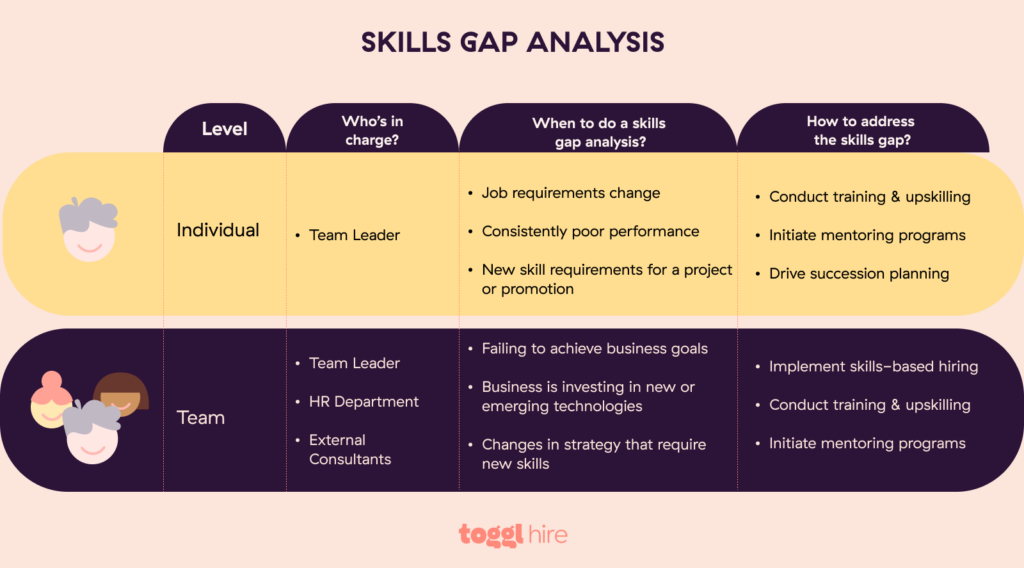
Assess existing employees with skill tests and offer training if they can upskill for new roles. When you hire new staff members, use testing to locate candidates with the right blend of abilities.
And sell your commitment to talent as a business perk. Turn your early-stage startup into a magnet for ambitious people who want to build their skill levels.
#2 – Use short-term expertise if needed
Recruiting full-time employees is difficult and risky. Finding the right candidates takes time, but you can fill skill gaps temporarily by bringing in consultants or freelance employees.
Don’t rely completely on freelance expertise. Use outsiders strategically to grow the business while gradually adding permanent employees. Try to source freelancers from reliable platforms (or through networking).
Consultants can also help to train and develop younger employees. Leverage their experience to help you expand over the long term.
#3 – Be strategic about how you grow
Don’t rush your recruitment process. Adopt a long-term hiring plan that keeps pace with revenue growth and maintains the skill levels you need.
Use phased recruitment to hire multiple employees at once. If you plan properly, you can save recruitment costs and staff growing projects quickly. One job ad, one recruitment process – two or three new stellar hires!
Look for versatility in your growing workforce as well. You can use skill tests to unlock expertise that would otherwise lie dormant. For example, developers might have content creation potential. Or marketing team members might upskill to maintain CRM systems.
#4 – Make the onboarding process as smooth as possible
One of the biggest growth problems is when a poor onboarding process damages performance and high employee turnover. Avoid this situation by creating a streamlined onboarding process.
Cover onboarding basics like compliance, job roles, and meeting team members. And get new workers involved with team events to make employees feel involved with the company culture. Check back after a month or so to make sure the new worker is up and running.
Another thing to remember is that the onboarding process starts with smart hiring. It’s easier to onboard and retain employees whose skill levels and personalities fit your business mission. Testing soft and technical abilities before making a job offer is the best way to make sure this happens.
Make startup recruitment simpler, better, faster
Hopefully, these ideas will help you create an unbeatable hiring plan. Whatever plan you come up with, keep three things in mind: simplicity, speed, and effectiveness.
In our recruitment experience, we’ve found that skills testing is a great way to balance these three goals.
Testing for skill levels cuts costs (say goodbye to CVs and endless interviews). You spend less time hiring by quickly identifying the top candidates. And testing works. You immediately know the abilities of high-scoring applicants, while job seekers love the simple candidate experience.
Find out more by browsing our skills assessment library, and start evaluating candidates today!

Juste loves investigating through writing. A copywriter by trade, she spent the last ten years in startups, telling stories and building marketing teams. She works at Toggl Hire and writes about how businesses can recruit really great people.













